Menus
- Middle class motorcycles in comparison
- Yamaha FZ8
- Aprilia Shiver
- BMW F 800 R.
- Ducati Monster 796
- Kawasaki Z 750
- Triumph Street Triple R.
- Performance chart
- Scoring
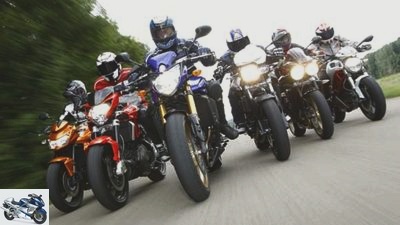
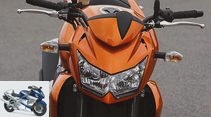
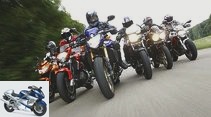
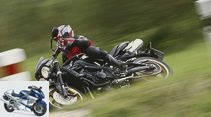
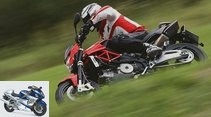
41 photos
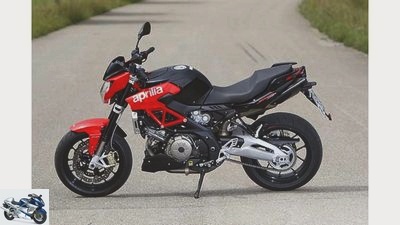
1/41
… still with small flaws.
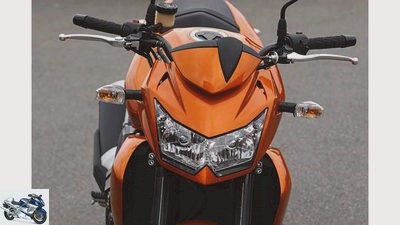
2/41
A mask like a street fighter.
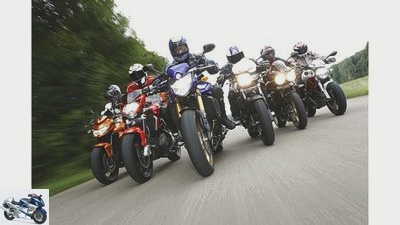
3/41
Warning: motorcycling is rocky and can become an addiction. It doesn’t even need mega-horsepower or 1000 cubic meters.
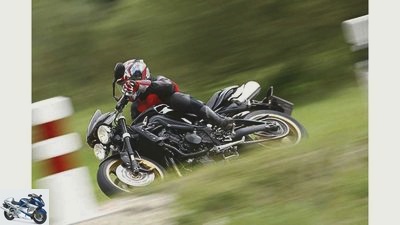
4/41
Triumph Street Triple R..

5/41
The Aprilia SL 750 Shiver: individual appearance, great detailed solutions.
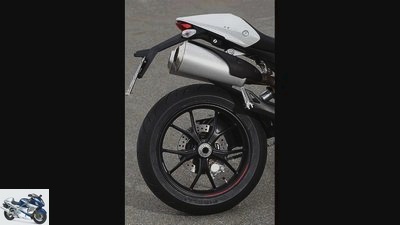
6/41
Beautifully made: a single-sided swing arm guides the beautiful cast wheel.
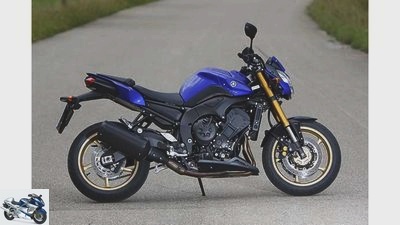
7/41
… except for their chimney design exhaust.
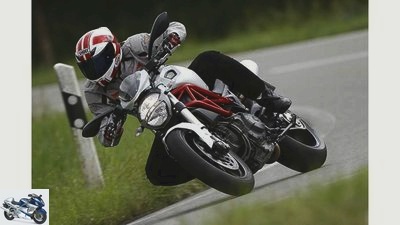
8/41
Ducati Monster 796: classy, distinctive, unorthodox.
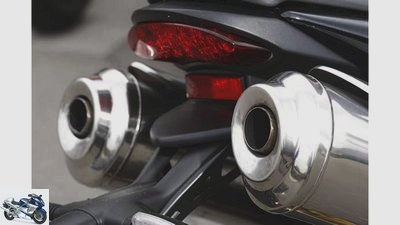
9/41
The underseat system of the Triumph.
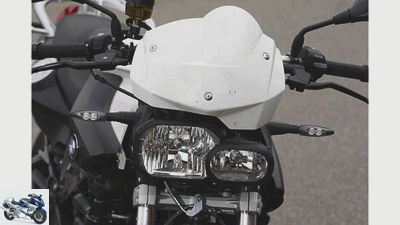
10/41
The asymmetrical headlights characterize the front of the BMW.
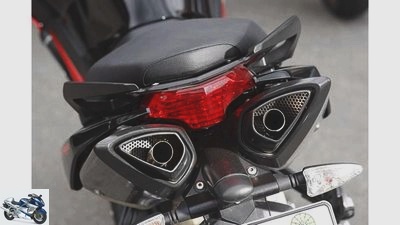
11/41
The eye goes with you – the stainless steel silencer not only sounds robust.
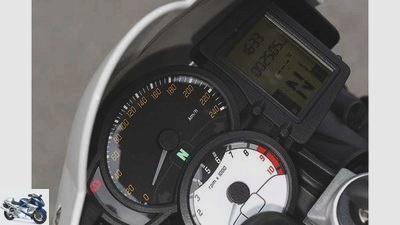
12/41
Too much of a good thing for some – the speed in particular is difficult to read.
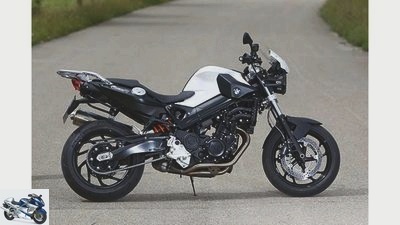
13/41
However, opinions differ on the design.
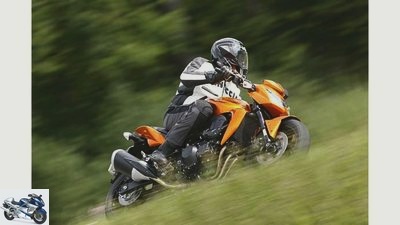
14/41
Unfortunately, the chassis does not meet this requirement.
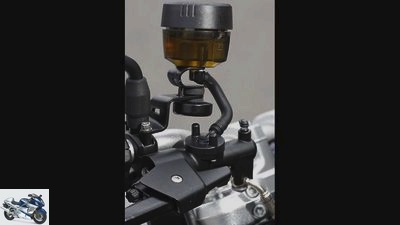
15/41
Expansion tank for the brake fluid – the BMW twin cannot hide sporty elements.
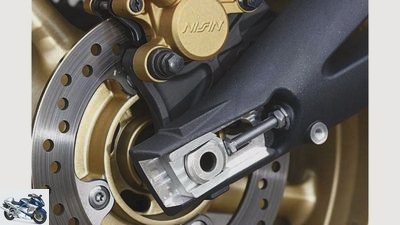
16/41
Good workmanship and attention to detail round off the good impression.
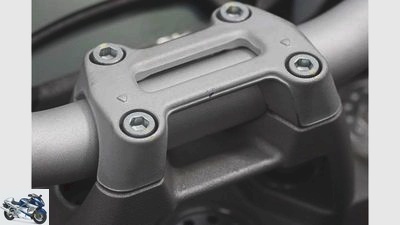
17/41
The handlebar clamp shows a love of detail – here Amore gave instructions, not technicians.
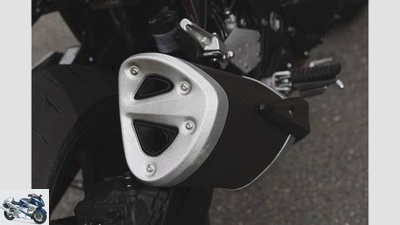
18/41
Beautiful new world. The muffler is perfectly formed, the sound is typical of the four-cylinder hissy voice.
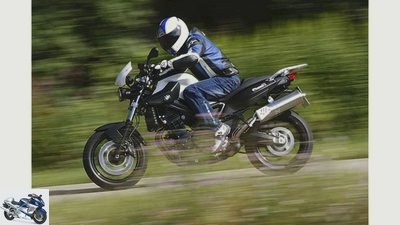
19/41
Even inexperienced people can get around quickly with the BMW.
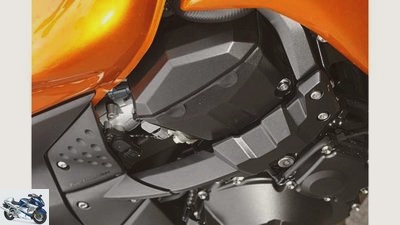
20/41
An additional strut around the engine strengthens the frame and stabilizes the chassis.
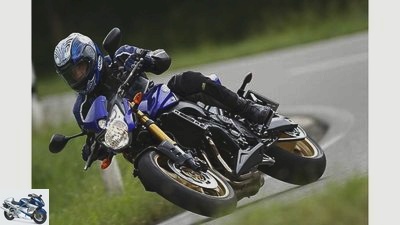
21/41
The FZ8 cannot be blamed for anything …
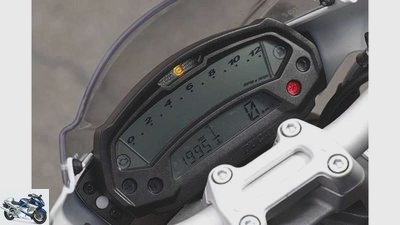
22/41
Don’t worry: This display prefers to keep its information to itself. Easy to read is different.
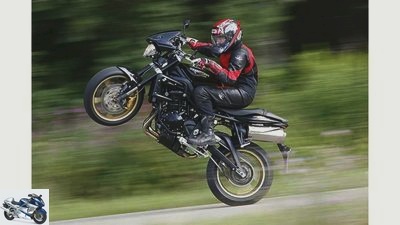
23/41
Fantastic sound, superb handling, ultra-smooth steering behavior …
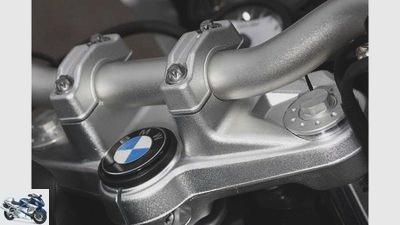
24/41
Looks and is valuable, although not necessarily beautiful – this is where the design language from automotive engineering is used.
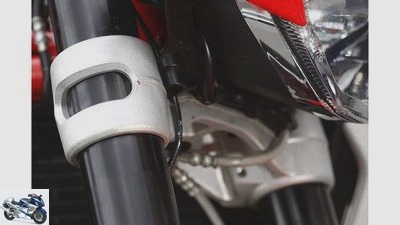
25/41
Fork and handlebar clamps are technically and visually a pleasure.
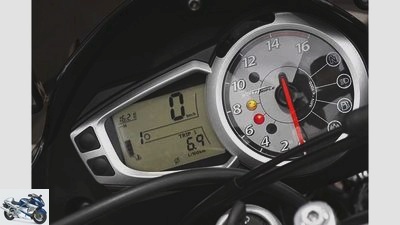
26/41
A veritable flood of information pours over the driver, and the backlight is also pleasing.
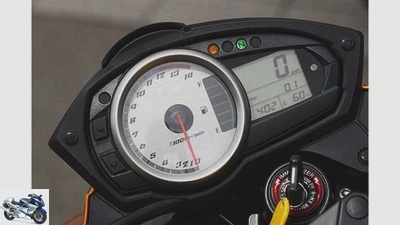
27/41
Clear and easy to read: the information center is above everything.
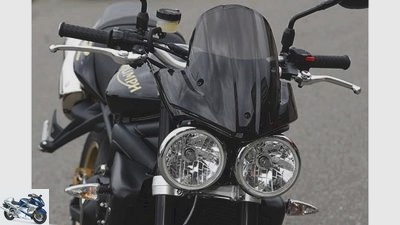
28/41
The triple’s trademark: the two round headlights.
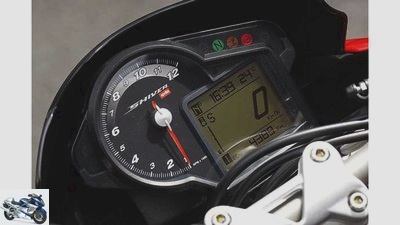
29/41
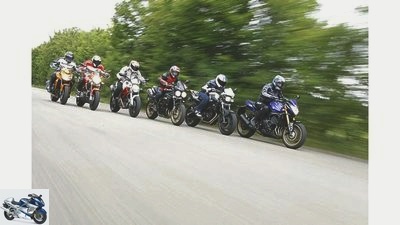
30/41
The mid-range in particular is more attractive than ever thanks to the new FZ8. But how good is the Yamaha in direct comparison with the competition?
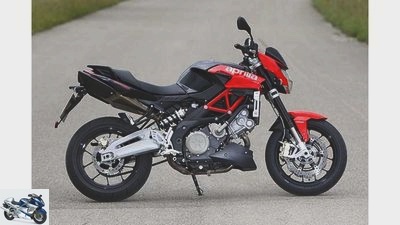
31/41
Unfortunately, the Italian two-cylinder temptation is fighting …
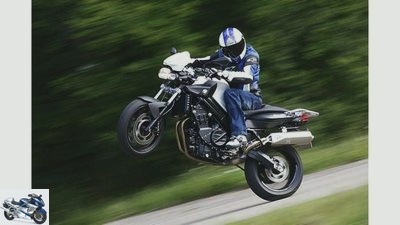
32/41
BMW F 800 R: great engine, stable chassis.
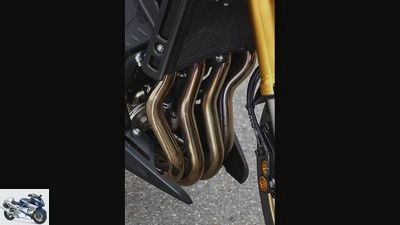
33/41
Shapely and of course made of stainless steel: Here the four-cylinder concept is emphasized again visually.
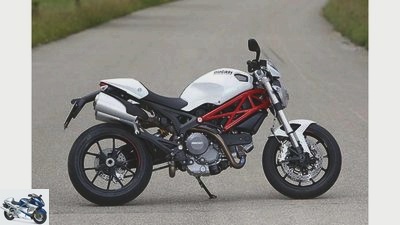
34/41
A bike with cult status that demands concentration and commitment from the rider.
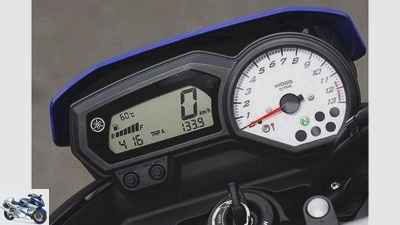
35/41
Best cockpit in comparison: readability, information mix, overview.
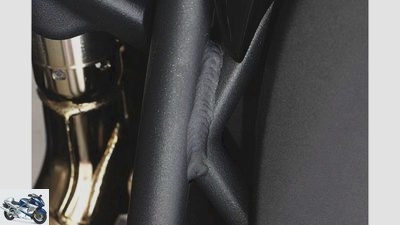
36/41
Weld seams like from a picture book – with the British woman, it is worth looking into hidden corners.
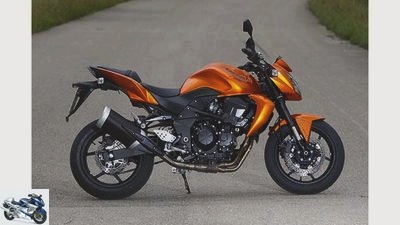
37/41
The Z 750 could use an update.
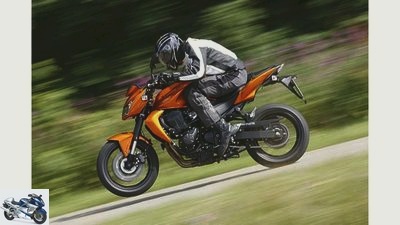
38/41
Kawasaki Z 750: aggressive design.
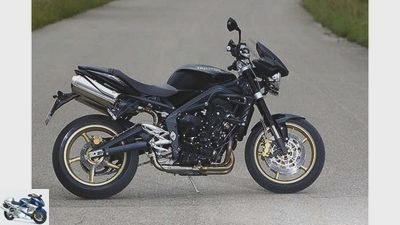
39/41
… bombastic engine – the triple is a jackpot.
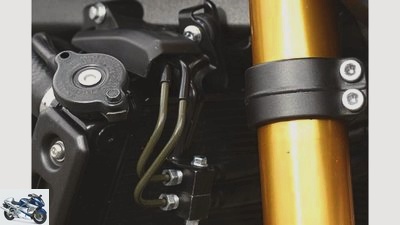
40/41
With cap: brake lines to the ABS pressure modulator.
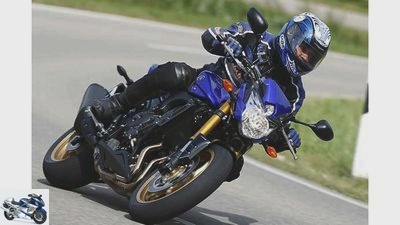
41/41
Yamaha FZ8: good first serve.
Comparison test, Aprilia SL 750 Shiver, BMW F 800 R, Ducati Monster 796, Kawasaki Z 750, Triumph Street Triple, Yamaha FZ8
Middle class motorcycles in comparison
Warning: motorcycling is rocky and can become an addiction. It doesn’t even need mega-horsepower or 1000 cubic meters. The mid-range in particular is more attractive than ever thanks to the new FZ8. But how good is the Yamaha in direct comparison with the competition?
Yamaha FZ8
It’s the old golden mean question. Somewhere between speed-hungry 600s and ultra-potent thousands, a class is currently establishing itself that is not only pushing itself into the limelight due to the no-more-need-no-man credo, but also an attractive price-performance ratio. Yamaha has stoked the fire in the new middle class with the FZ8. In the first test against its big sister FZ1 (MOTORRAD 17/2010) the new one had to prove how good it is. This exchange of blows will be about how it drives in direct comparison to the competition.
That’s why we take a seat in the saddle of the Yamaha straight away. Everything fits. Nothing is inaccessible, everything is easy to use. The four-cylinder runs pleasantly smoothly and the machine instills confidence even in novice drivers. It responds cleanly to gas commands, the clutch is pleasantly smooth, and it is wonderfully easy to steer. This complete light-heartedness, with which the FZ8 moves from the first meter, relieves the driver. He doesn’t have to worry about any peculiarities of the bike and can concentrate fully on driving pleasure.
Buy complete article

Comparison test
Middle class motorcycles in comparison
Yamaha FZ8: good first serve.
The FZ8 shines with superb steering behavior and rolls smoothly and safely on its Bridgestone BT21. As if the desire to follow the ideal line were a clear command. On the engine side, the driving pleasure is unfortunately marred by a slight trailer at 5000 rpm. If you open the shower at this speed, you will not be rewarded with brilliant acceleration, but will be surprised by seconds of thought. Then downshifting is the order of the day. The transmission can be shifted very smoothly and precisely. And once the engine speed has reached 6000 rpm, the machine weighing 216 kilograms takes off as if there were no more tomorrow. Your revving is unbridled. Above 6000 tours the engine finally gets down to business.
The following can be said on the subject of the chassis: Except for the adjustable spring base at the rear, there are no adjustment options. Overall, the suspension elements of the Yamaha are very comfortable. Both the shock absorber and the fork respond sensitively and give good feedback. The FZ8 solo is ideally equipped for the tourist country road ride over categories one to four. Only when the driver pulls briskly on the cable does the soft chassis design thwart his plans. Likewise, the shock absorber quickly reaches its limit in pillion mode. In addition, the FZ8 touches down relatively early with the notches. On the other hand, there is good news about the brakes, which are completely reliable in all driving situations: the ABS controls sensitively, the brakes are neither too dull nor too toxic and always remain optimally controllable. Overall, the Yamaha is a great motorcycle that doesn’t have to fear the competition.
Aprilia Shiver
The Aprilia SL 750 Shiver: individual appearance, great detailed solutions.
Well fine. Then we switch to the Aprilia Shiver. First impression: The beautiful Italian doesn’t integrate the driver as flatteringly as the Yamaha. You sit up instead of in the machine. Even the first inclinations in an inclined position reveal a shortcoming of the Shiver: It drives – to put it hard – like a buoy, does not lean as weightlessly as the Yamaha and always wants to straighten up. Any steering corrections are also not as easy to implement as with the FZ8. The reason for this is more to be found in the chassis geometry than in the mounted Pirelli Corsa III. The ride-by-wire technology, in which the throttle valves are operated electronically, turns out to be particularly annoying. The system works well in other models such as the BMW S 1000 RR. The Aprilia Shiver is still missing a lot of fine-tuning. The water-cooled V2 runs quite smoothly for a two-cylinder, but it only reacts with a delay and completely inharmoniously to gas commands.
While the power development in the full load curve relevant for the test bench run appears almost flawless on the diagram, the driving operation reveals glaring weaknesses. When the traffic light starts, for example, the Shiver pushes really hard for the first few meters and then falls straight back into a depression. The 90-degree Vau produces 86 hp at 9300 rpm. And these can be served to the rider via three different modes: The rain mode reduces the performance somewhat and is intended to make the bike more manageable under difficult conditions. In sport mode, the engine responds extremely gruffly to gas commands, while in touring mode it converts them more gently but inharmoniously.
Dear technician, detention please. The not very sensitive fork in connection with a softly tuned shock absorber informs the pilot quite well about ground conditions. The two-person operation overtaxes the shock absorber just like that of the Yamaha. In terms of deceleration, the Shiver impresses with easy-to-dose, effective stoppers. However, the ABS sometimes regulates so late that stoppies are quite the order of the day.
The Shiver shines with proper workmanship and attracts with a fresh, eye-catching design, but defects such as the response behavior and the ABS tuning should definitely be remedied so that the machine convinces as a harmonious overall package.
BMW F 800 R.
BMW F 800 R: great engine, stable chassis.
Okay, let’s get from the FZ8 to the BMW. Oh! The footrests sit further forward and higher than on the Yamaha, slightly inactive, so to speak. However, the handlebars sit comfortably in the hand, and the seat cushion also seems to be suitable for long journeys. Start up. Another aha! The first gear has a very long ratio, despite 800 cubic meters and parallel twin power, the engine demands revs at the traffic lights to get going. Otherwise, the twin shines with excellent coordination. With only four liters per 100 kilometers, it consumes 0.8 liters less fuel than the Yamaha and also less than the rest of the test field.
Both cold and hot start behavior are absolutely exemplary, and the throttle response is impeccable. The engine hangs super gently on the gas, but vibrates annoyingly at high speeds. It lifts its 94 hp at 8700 rpm, and a blink of an eye later the limiter takes effect. The F 800 R offers a feeling of security from the very first few meters. She steers purposefully, remains stable on course and enables course corrections at any time. However, turning in is not as smooth as it is with the Yamaha, but rather a bit slower, especially at low speeds, which is largely due to the mounted steering damper. The Bavarians have succeeded in the feat of constructing a relatively comfortable, stable chassis even for fast cornering. Both the fork and the shock absorber respond cleanly, although not as sensitively as with the Yamaha, are puncture-proof and stabilize the load even in pillion operation.
Good cue by the way. No other machine in comparison transports a passenger as relaxed and confident as the BMW. Their brakes are almost equal to those of the Yamaha, but the FZ8 stoppers shine with a nuance better controllability.
Ducati Monster 796
Ducati Monster 796: classy, distinctive, unorthodox.
Short cigarette break. Vehicle change. And get into the saddle of the Ducati Monster 796. As soon as you reach for the handlebars, which are positioned far forward, it becomes clear: Relaxed is different. Here the driver is forced into an active, front-wheel-oriented sitting posture that would have to accommodate sporty driving. But in direct comparison with the FZ8, the strange handlebar offset makes you lose the feeling for the monsters, especially for the front wheel. While all other machines in the comparison build trust more or less seamlessly, you poke around at the Monster like the famous stork in a salad. Regardless of what happens – swinging in an inclined position, turning in or leaning into the apex of the curve on the brake – the feedback from the machine is watered down.
The completely overdamped fork responds worlds worse than that of the FZ8, and the shock absorber is also much more hostile to comfort. In addition, there is the engine, an air-cooled V2, which whips badly on the chain below 3000 rpm and constantly signals that it wants to be turned sporty. If you comply with his wish, he offers great cinema. Exactly everything you would expect from a V2 with a strong character: pithy rumble, powerful sound and massaging, pulsating vibrations. The Vau produces its 86 hp at 8300 revs, while the water-cooled Aprilia Vau wants to be pushed 1000 revs higher for the same power output. Two small torque drops at 4500 and 7000 rpm are also annoying. And a secondary gear ratio that is too long prevents robust acceleration or good torque values.
Although the manufacturers give almost the same top speed with 218 km / h (Yamaha) and 215 km / h (Ducati), the acceleration differs strikingly: Up to 200 km / h, the Monster takes 22.3 seconds. The Yamaha, on the other hand, only takes 15.2 seconds. Motorcycling is one thing, monster driving is another. You have to shoot yourself badly at the racy Italian to be happy with her. Sit on it and feel good like on the FZ8 is not. It’s too special for that. But that is exactly why it is loved and has achieved cult status.
Kawasaki Z 750
Kawasaki Z 750: aggressive design.
Another cigarette break. Man, we’re still getting addicted. Then it is time to sit on the Kawasaki Z 750. The handlebars are more clumsily cranked than the Yamaha counterpart, it also sits more actively, more front-wheel-oriented, which is basically not bad at first, and the wide tank spreads its legs widely. Already in the first few meters, however, disillusionment sets in. The Kawa is wobbly and doesn’t really want to give in. In an exaggerated way, it feels like there’s a 90mm cut-off wheel on the front and a 240mm slipper on the back. You either have to counter-steer badly or push the machine hard in order to roughly touch the ideal line. The mounted Dunlop Qualifier is certainly not to blame for this alone. Although basically the same concept, the Yamaha steers itself around worlds lighter, more precisely and more pleasantly than the Kawa, which you can see in direct comparison that it is getting on in years.




41 photos
Pictures: comparison test
To home page

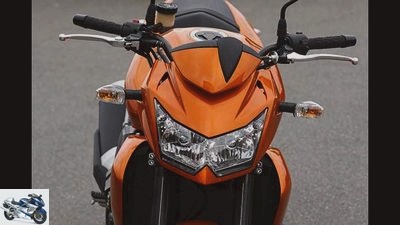
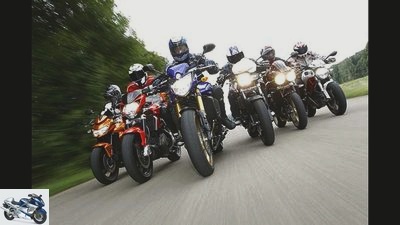
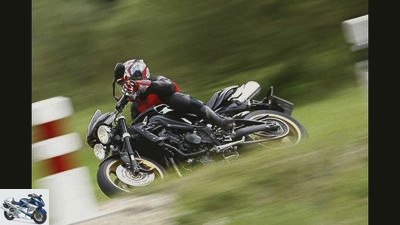
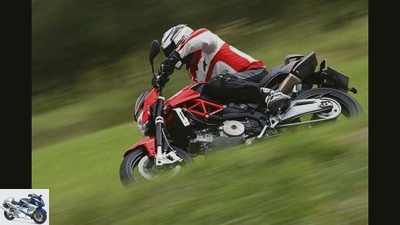
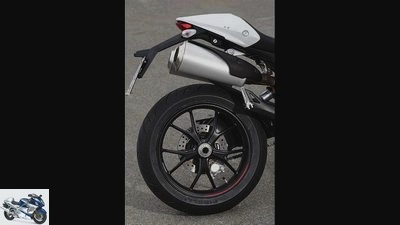
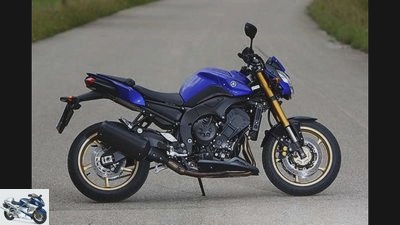
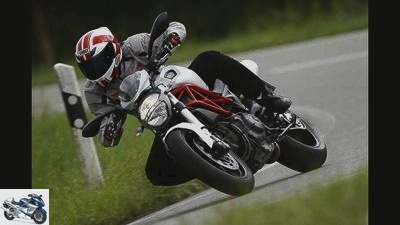
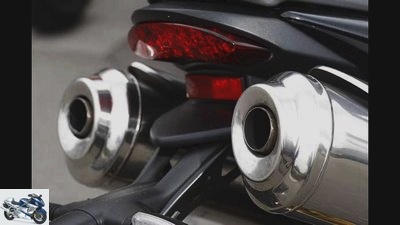
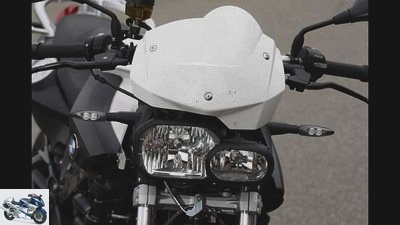
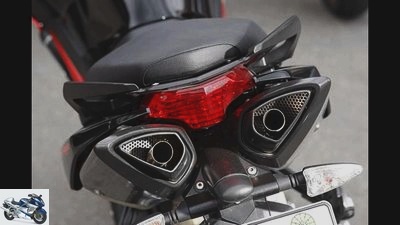
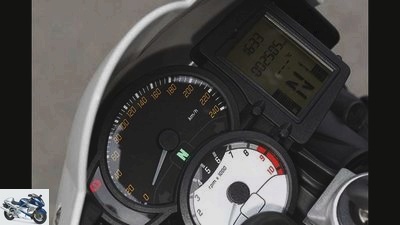
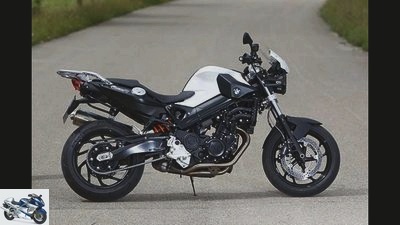
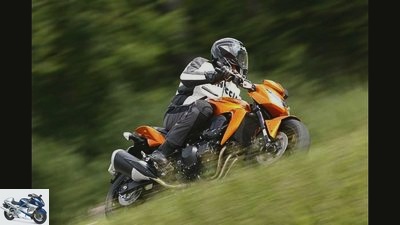
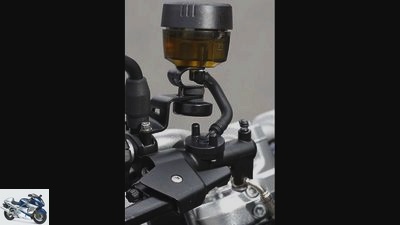
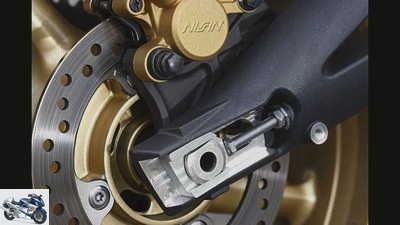
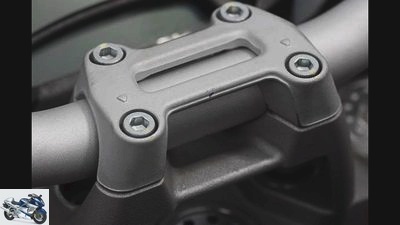
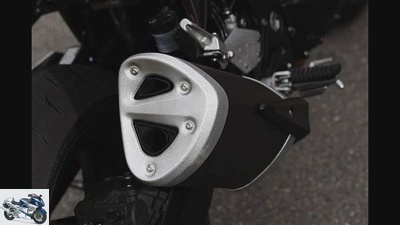
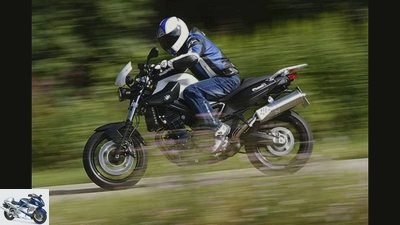
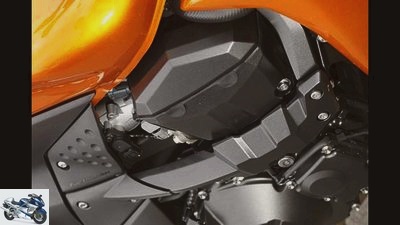
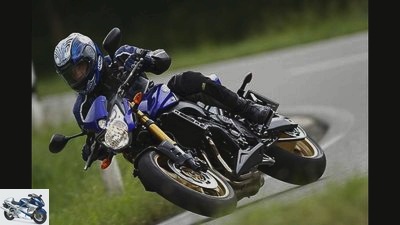
jkuenstle.de
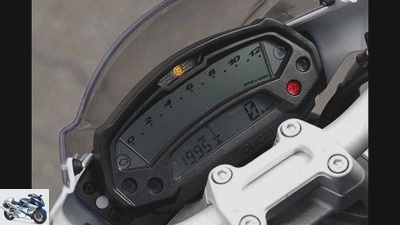
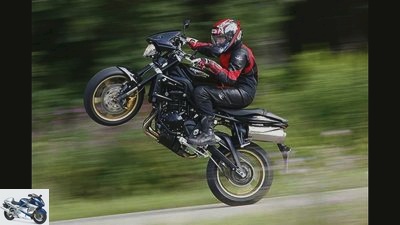
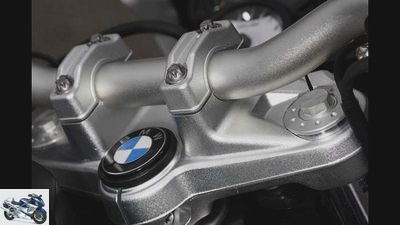
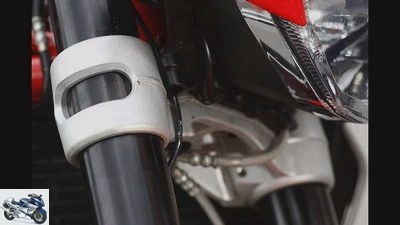
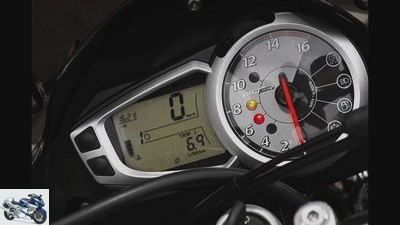
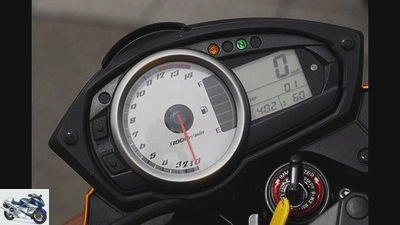
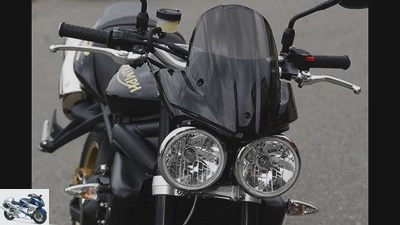
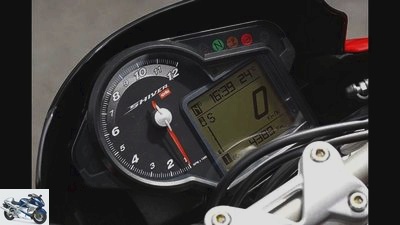
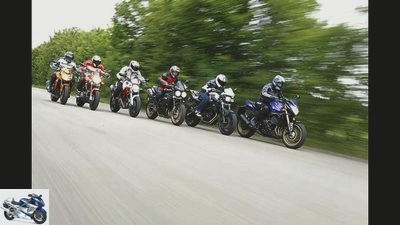
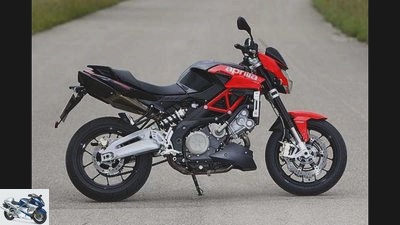
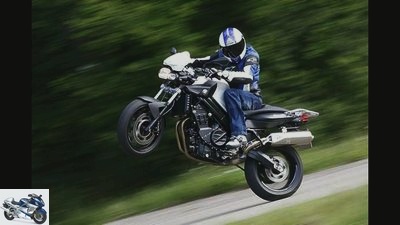
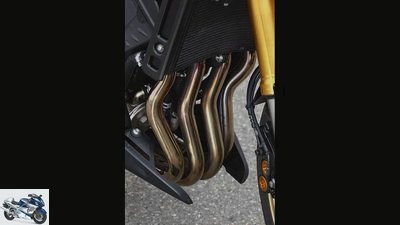
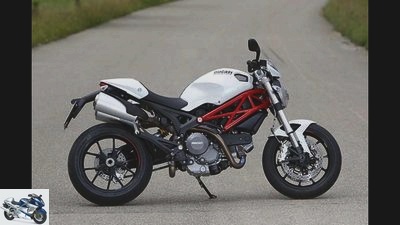
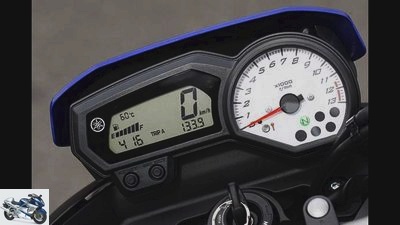
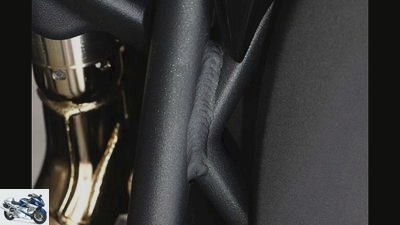
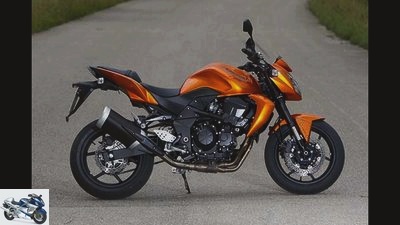
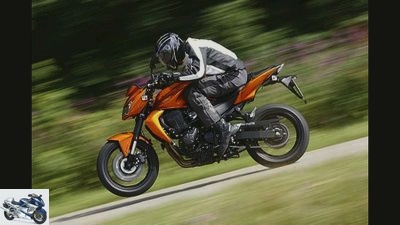
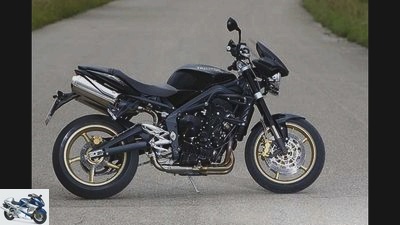

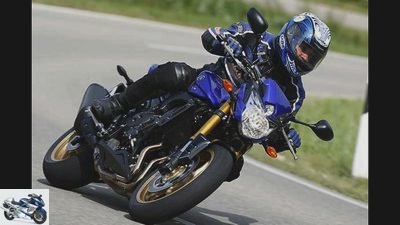
jkuenstle.de
Z 750 appear very blunt and therefore cannot be dosed particularly well.
Anyone who brakes in an inclined position also has to fight a strong installation request. Perhaps the Dunlop qualifiers installed here are not the best choice. The suspension setup is also less successful. Both the shock absorber and the fork do not have velvety responsiveness and comfort. They are also not matched to the sporty tightness. The bottom line is: Compared to the easy-to-drive Yamaha, the Kawasaki is a real challenge and demands commitment from the driver.
Triumph Street Triple R.
Triumph Street Triple R: Fantastic sound, superb handling, ultra-smooth steering behavior, bombastic engine – the Triple is a grand prize.
The last bike of the comparison is ready. With 675 cubic meters, the Triumph Street Triple R is the smallest in the test field. And it is the only one that does not have an ABS. This security feature is guaranteed to be important for many potential customers when making a purchase decision. That sounds tough, but the guys from the island often go strange ways, see euros. But even with their three-cylinder concept they stand alone in this displacement segment. But they did everything right. The engine is the ultimate grenade. He hangs ultra-directly on the gas, implements commands to sprint, overtake or drive a wheelie seamlessly and act so greedily that one seriously wonders whether the competition has slept in the past few years. The triplet develops its maximum output of 108 hp at 11,800 rpm. With a cursory look at the performance diagram, you may not trust this drive very much.
If you also take a look at the rear wheel power in the last gear, taking into account the overall ratio, the triple is above the competition in every speed range. This engine is awesome. And he also has easy play with the 675, which weighs only 190 kilograms with a full tank.
If the term toy ever applies to a motorcycle, it is the little triple. The British also serve the right chassis to go with the cream of the crop. Fork and shock absorber shine with rich damping, good responsiveness and sporty reserves. Incidentally, the test machine was already equipped with the 15 millimeter longer swing arm, which is now also used on the Daytona 675. This change, which was incorporated into ongoing production in mid-2010 and is intended to promote the stability of the machine, has no negative effects on handling. Just like the very sporty Pirelli Supercorsa Pro, which needs to be warmed up carefully to build up grip. Then the triple can be put down as agile as ever, turned in and corrected even in the greatest inclination by pressing the thigh or using the wide handlebars. While the steering behavior of the Yamaha was as light as a feather, the Triple can only be described as weightless. This machine reads your thoughts and implements them. Scary, isn’t it? The brakes are awesome, they bite as powerfully as a hungry hyena and you can actually operate them with one finger. The triple is extremely sporty in its nature, but also very beginner-friendly.
Ultimately, there are only four things you can blame for the triumph: the faint-hearted complain about the hard seat and safety fanatics about the lack of ABS. With a consumption of 5.3 liters per 100 kilometers, the Brit is thirstiest in this field, and maneuvering is made difficult by the very small steering angle. And so the Yamaha ultimately finds itself in the front midfield. It has to give way to the agile triumph as well as the more agile BMW, which is more suitable for everyday use.
Performance chart
BILLION
Mid-range performance chart.
The Aprilia is the best example of how theory and practice differ. While it pretends to be in absolute harmony with its full load curve on the diagram and one actually assumes that the 750 series delivers its performance wonderfully linearly, the reality is just different. Unfortunately, the diagram cannot reproduce the response behavior and the implementation of gas commands. Just as deceptively designed are the violent torque drops at the BMW.
The torque bends twice by six or three newton meters. However, this is only marginally noticeable when driving. In stark contrast to how the Yamaha starts at 5500 rpm. Here the diagram values agree completely with the perceived values when driving. And the Triumph leather completely from the competition despite modest corners when accelerating. The decisive factors here are the very direct implementation of gas commands, their low weight and the extremely successful overall transmission.
Scoring




41 photos
Pictures: comparison test
To home page

jkuenstle.de








































MOTORCYCLE test result
The mid-range in particular is more attractive than ever thanks to the new FZ8. But how good is the Yamaha in direct comparison with the competition?
1 BMW F 800 R: No real weaknesses, great suitability for everyday use, friendly to the passenger – virtues that are important for many bikers help the Bavarian to win here.
2 Triumph Street Triple R: She’s real rock ‘n‘ roll and an addicting drug. If consumption were lower and the machine was equipped with ABS, it would have a chance of victory.
3 Yamaha FZ8: Successful debut, but the German and British competition is better. Ultimately, the FZ8 lacks power in the mid-rev range and a better chassis.
4 Aprilia SL 750 Shiver: A better regulating ABS, but above all a more sophisticated mapping would do the Italian good. It would still not be enough for a better ranking.
5 Kawasaki Z 750: You can tell that she is getting on in years. The engine is still not scrap iron, but the chassis has been thoroughly overhauled. And swapped the tires.
6 Ducati Monster 796: Charisma alone is not enough. The steering behavior takes getting used to and is indirect, everyday qualities such as light or pillion suitability fall by the wayside.




41 photos
Pictures: comparison test
To home page









































Related articles
-
35 photos 1/35 BMW S 1000 R, Ducati Monster 1200 S, KTM 1290 Super Duke R and Triumph Speed Triple R in comparison test….
-
Ducati Monster 821, Aprilia Shiver, BMW F 800 R in comparison test
Arturo Rivas Ducati Monster 821, Aprilia Shiver, BMW F 800 R in the comparison test asphalt sympathizers Even if there is no gray in the photo: The …
-
Comparison test of mid-range naked bikes over 100 hp
31 pictures 1/31 Yamaha MT-09 SP, Kawasaki Z 900, Triumph Street Triple R, KTM 790 Duke, Ducati Monster 821 and Suzuki GSX-S 750 …
-
Comparison test Honda Hornet 600 ABS, Kawasaki Z 750 ABS and Triumph Street Triple
Artist comparison test Honda Hornet 600 ABS, Kawasaki Z 750 ABS and Triumph Street Triple Weekend Warriors Life is almost sterile. Engines…
-
Middle class naked bikes in comparison test
r-photography.info 30 pictures r-photography.info 1/30 With the Z 900 Kawasaki pushes the middle class close to the full liter. Looks up …
-
Comparison test: Aprilia SL 750 Shiver, Benelli TnT 899S, Ducati Monster 696, Triumph Street Triple
Gargolov Comparison test: Aprilia SL 750 Shiver, Benelli TnT 899S, Ducati Monster 696, Triumph Street Triple Italy 3-1 England Content of The European…
-
48 hp motorcycles (model year 2019) in a comparison test
46 photos Jorg Kunstle 1/46 Six motorcycles compete against each other in the 48 hp comparison test. The models Kawasaki Z 400, KTM 390…
-
Comparison test Ducati Monster 797 and Suzuki SV 650
Artist 28 photos 1/28 Ducati Monster 797 and Suzuki SV 650 in comparison test. 2/28 Ducati Monster 797: Modern, the first: The…
-
Comparison test all-rounder Honda Hornet 900, Triumph Speed Triple, Yamaha FZS 1000 Fazer
Comparison test all-rounder Honda Hornet 900, Triumph Speed Triple, Yamaha FZS 1000 Fazer Free radicals Uncovered, light and strong: Honda Hornet 900….
-
fact Comparison test Crosser In limbo It seems clear that the four-stroke crossers in the small class will soon take over the helm. But now? Have a look…